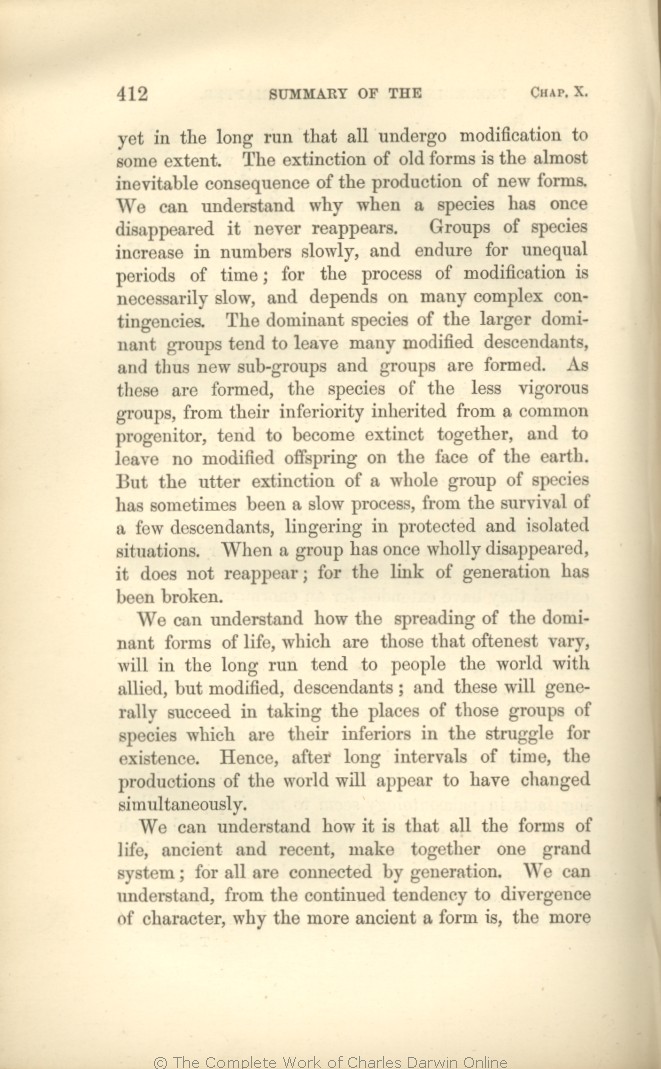yet in the long run that all undergo modification to some extent. The extinction of old forms is the almost inevitable consequence of the production of new forms. We can understand why when a species has once disappeared it never reappears. Groups of species increase in numbers slowly, and endure for unequal periods of time; for the process of modification is necessarily slow, and depends on many complex contingencies. The dominant species
of the larger | of the larger 1859 1860 1861 1866 |
| belonging to large and 1869 1872 |
| and thus 1859 1860 1861 1866 | | which form 1869 1872 |
| groups 1859 1860 1861 1866 | | groups. 1869 1872 |
| are 1859 1860 1861 1866 | are 1869 1872 |
| formed. 1859 1860 1861 1866 | formed. 1869 1872 |
| has sometimes been a 1866 1869 1872 |
| may often be a very 1859 1860 1861 |
|
|
We can understand how the
spreading of the | spreading of the 1859 1860 1861 1866 |
| OMIT 1869 |
| of life, which are those that oftenest vary, will in the long run 1859 1860 1861 1866 |
| which spread widely and yield the greatest number of varieties will 1869 |
| taking 1859 1860 1861 1866 | | displacing 1869 |
| places of those groups of species 1859 1860 1861 1866 |
| groups 1869 |
| will 1859 1860 1861 1866 | will 1869 |
| simultaneously. 1859 1861 1866 1869 | | simultaneously. & 1860 |
|
|
We can understand how it is that
all the forms of life, ancient and recent, make together one grand system; for all are connected by generation. | all the forms of life, ancient and recent, make together one grand system; for all are connected by generation. 1859 1860 1861 1866 |
| all the forms of life, ancient and recent, make together a few grand classes; for all are at least thus far connected by generation. 1869 |
| dominant forms which spread widely and yield the greatest number of varieties tend to people the world with allied, but modified, descendants; and these will generally succeed in displacing the groups which are their inferiors in the struggle for existence. 1872 |
| 1 blocks not present in 1859 1860 1861 1866 1869; present in 1872 | | Hence, after long intervals of time, the productions of the world will appear to have changed simultaneously.
|
| understand, 1859 1860 1861 1866 1869 | | understand 1872 |
| from 1859 1860 1861 1866 1869 |
| how it is that all the forms of life, ancient and recent, make together a few grand classes. We can understand, from 1872 |
|









